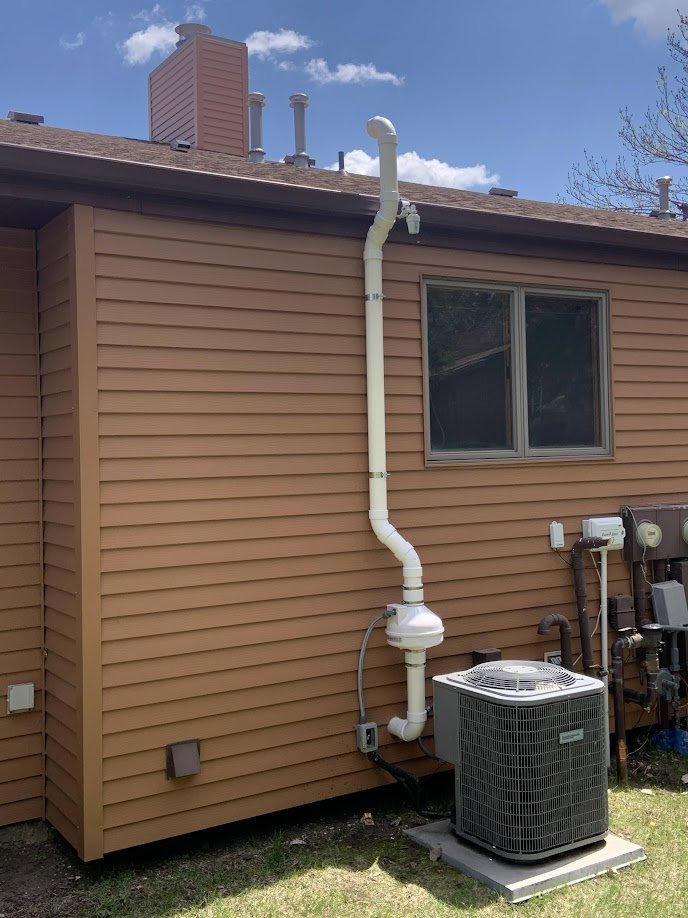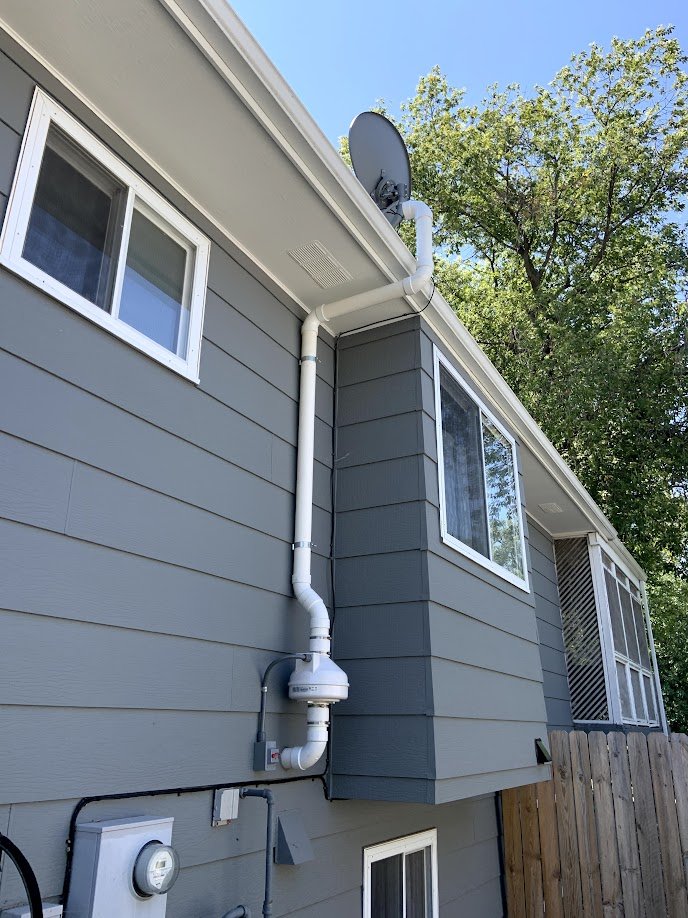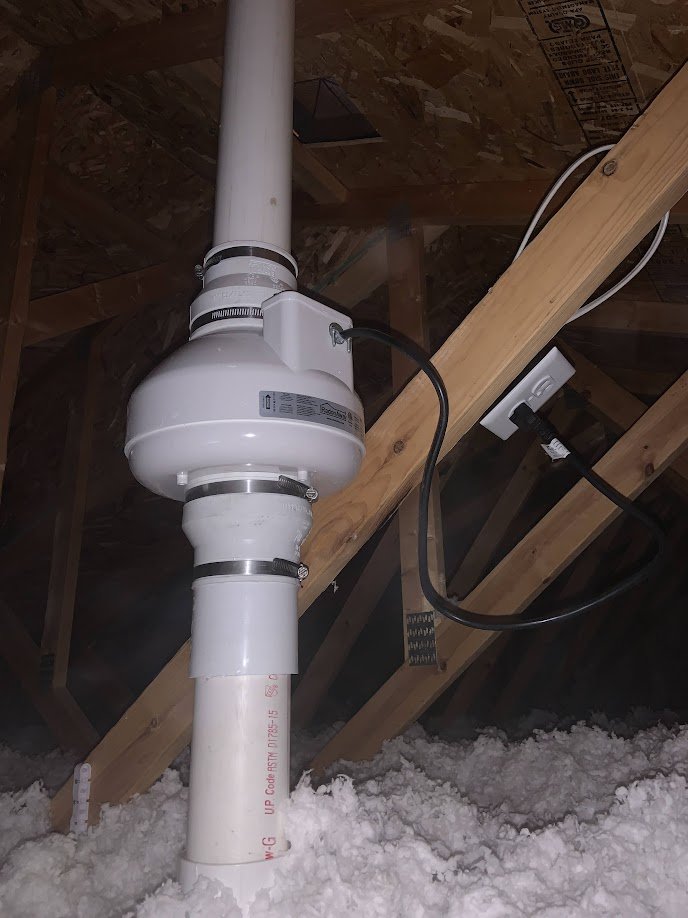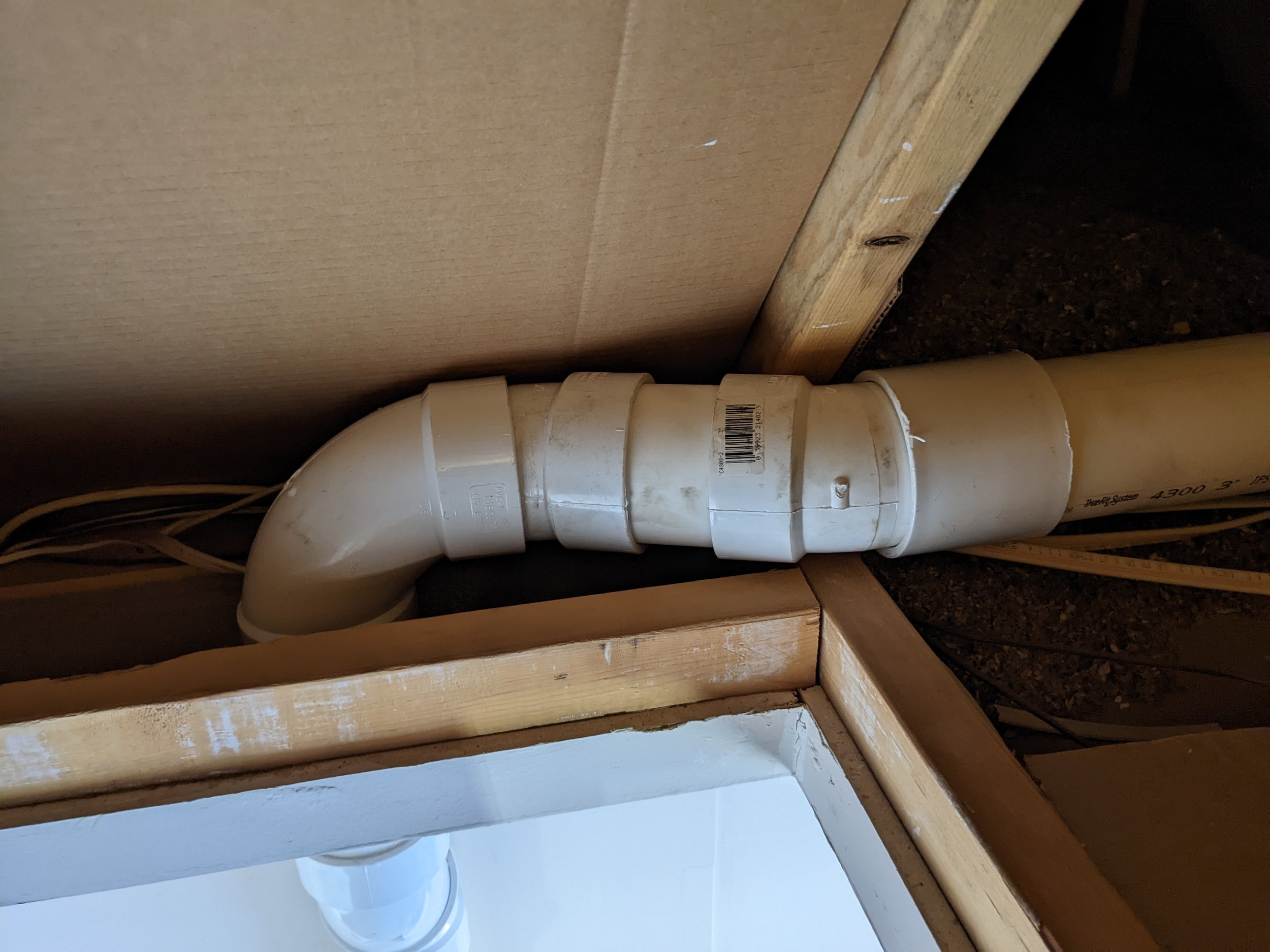
High Flow Mitigation
High flow mitigation systems are the most common solution for most homes. This is because we often utilize the sump bucket and drain tile system already installed under the home which allows us to achieve the best airflow. This free flowing air matched with a light, teardrop style fan allows the radon to be removed at very efficient rates, typically reducing levels to 1.0 pCi/L or below without issue.
In the case the sump bucket can’t be reached, it will still be sealed since it’s often a main entry point for radon. The lids are clear acrylic cut specifically to each bucket. They allow for easy checks on water levels, include a port to remove water if necessary, and are easy to install with a sump pump.
Where we place the pipe running through the home is just as important as how we pull air from the ground. Our most used route is typically from the mechanical room into the garage, then up into the attic. This keeps the pipe out of the house, and the fan away from bedrooms and quiet areas.
If the garage can’t be reached from the suction point, we look for chases and closets in the house that can be used. When installing a pipe through a closet, we choose the least intrusive corner.
If there is no way to get through the main floor of a home to the attic, we may opt for an exterior installation. The pipe is taken outside, then the fan is mounted and the pipe is run up and over the gutter edge.
After the mitigation system is installed, a post-mitigation test is set to ensure that the system is functioning as it should. If the test comes back at levels of 4.0 pCi/L or more, we come back and tweak the system until it’s running as efficiently as possible.









